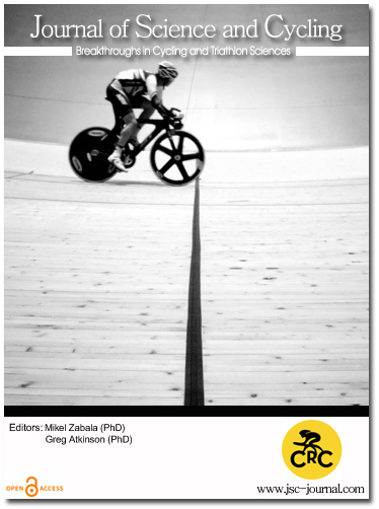Comparison of anthropometric characteristics between world tour and professional continental cyclists
DOI:
https://doi.org/10.28985/181231.jsc.02Keywords:
body dimensions, body surface area, frontal area, cyclists, time trialistsAbstract
This study analyzed the physical characteristics of the World Tour (WT) and Professional Continental (PC) cyclists during the 2018 racing season. Seven hundred sixty-three professional riders (27.9 +4.2 years, 1.81 +0.06 m, 68.6 +6.33 kg) were compared for physical characteristics (i.e. age, height, and body mass). All riders were classified within specialties based upon UCI points ((grand champion (GC), sprinter (S), time trialists (TT), one-day racer (OD)) earned during the previous season. As expected there were differences between the rider’s specialty as well as the different elite divisions of riders. Further results showed that there was no difference in Body Mass Index (BMI; kg.m2) in all riders, however, TT riders in the WT had a significant difference in body surface area (BSA) and frontal area (FA) when compared to the TT riders in the PC division. In conclusion, the present study identified specific physical characteristic differences between the different types of professional cyclist levels of riders (WT vs. PC) and within their specialty.Downloads
Published
How to Cite
Issue
Section
Copyright (c) 2020 Journal of Science and Cycling

This work is licensed under a Creative Commons Attribution-NonCommercial 4.0 International License.
Authors contributing to Journal of Science and Cycling agree to publish their articles under a Creative Commons CC BY-NC-ND license, allowing third parties to copy and redistribute the material in any medium or format, and to remix, transform, and build upon the material, for any purpose, even commercially, under the condition that appropriate credit is given, that a link to the license is provided, and that you indicate if changes were made. You may do so in any reasonable manner, but not in any way that suggests the licensor endorses you or your use.
Authors retain copyright of their work, with first publication rights granted to Cycling Research Center.






